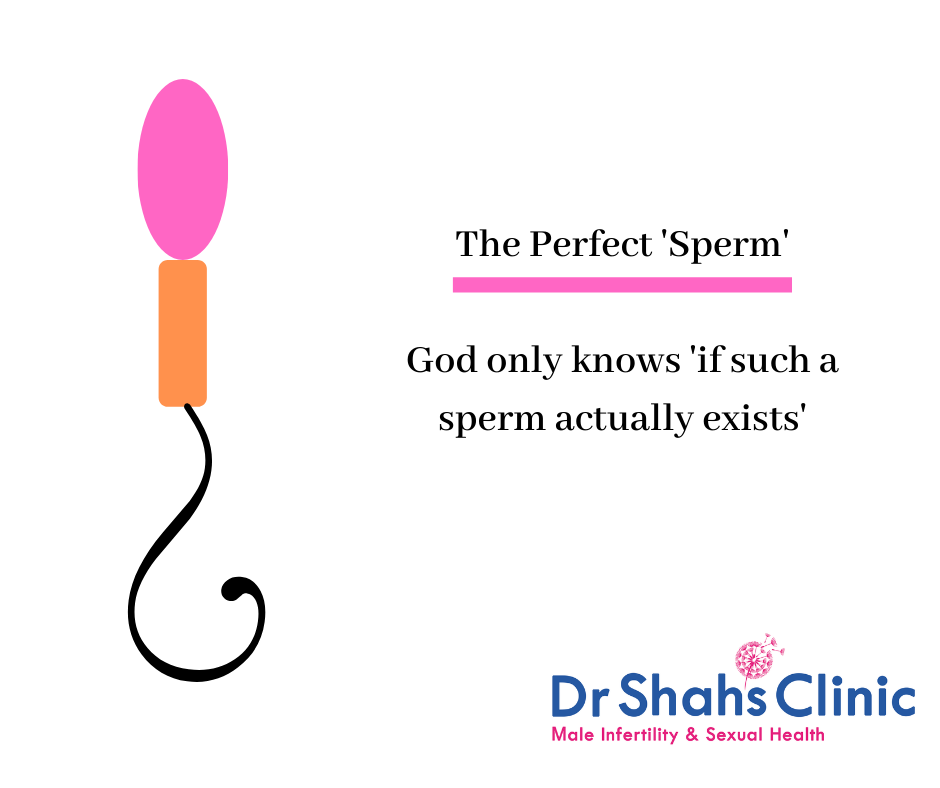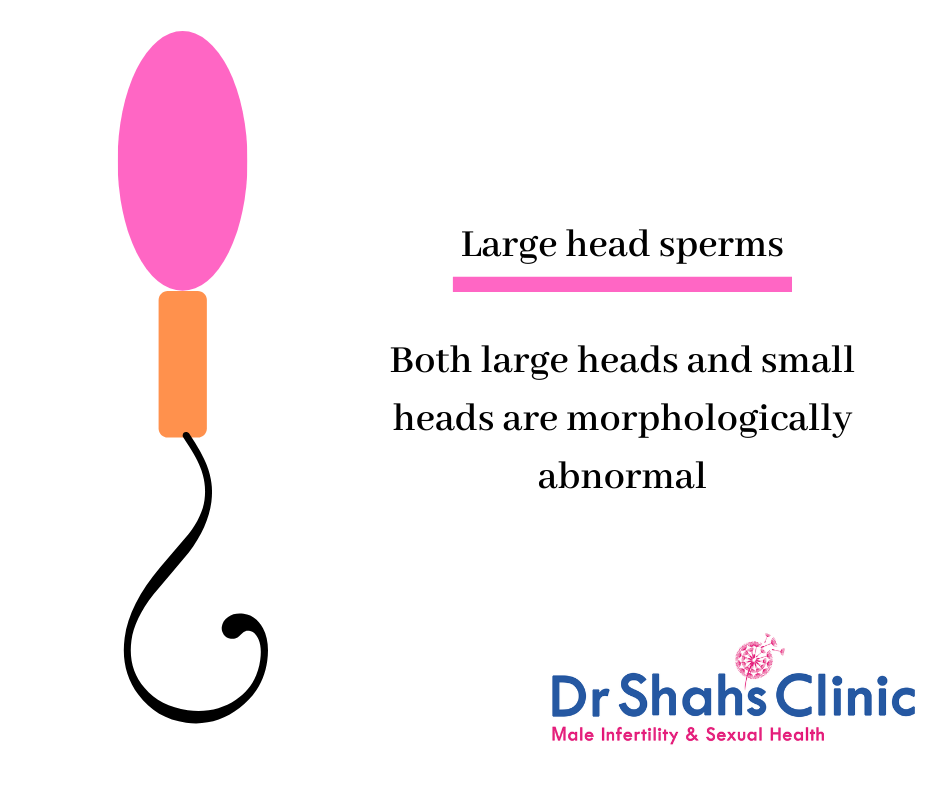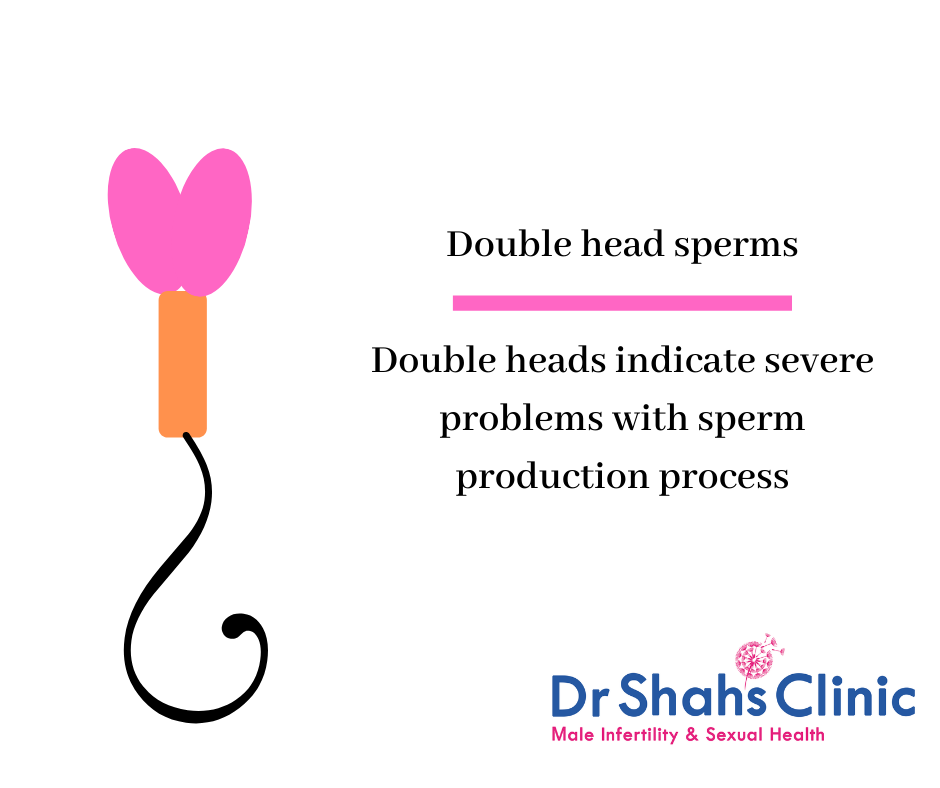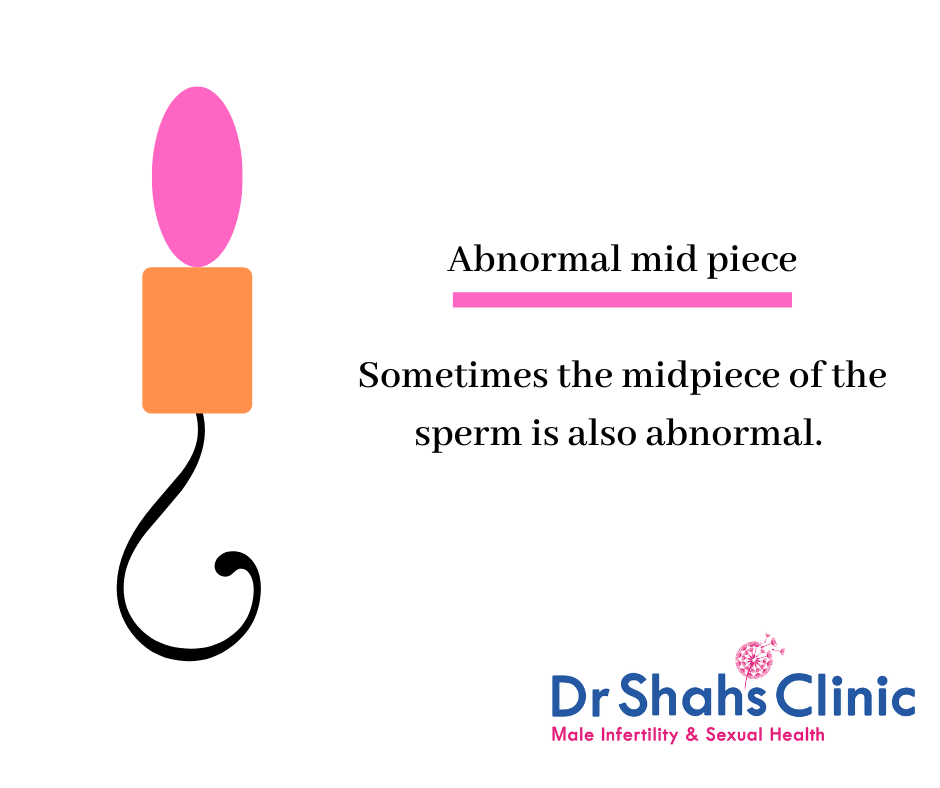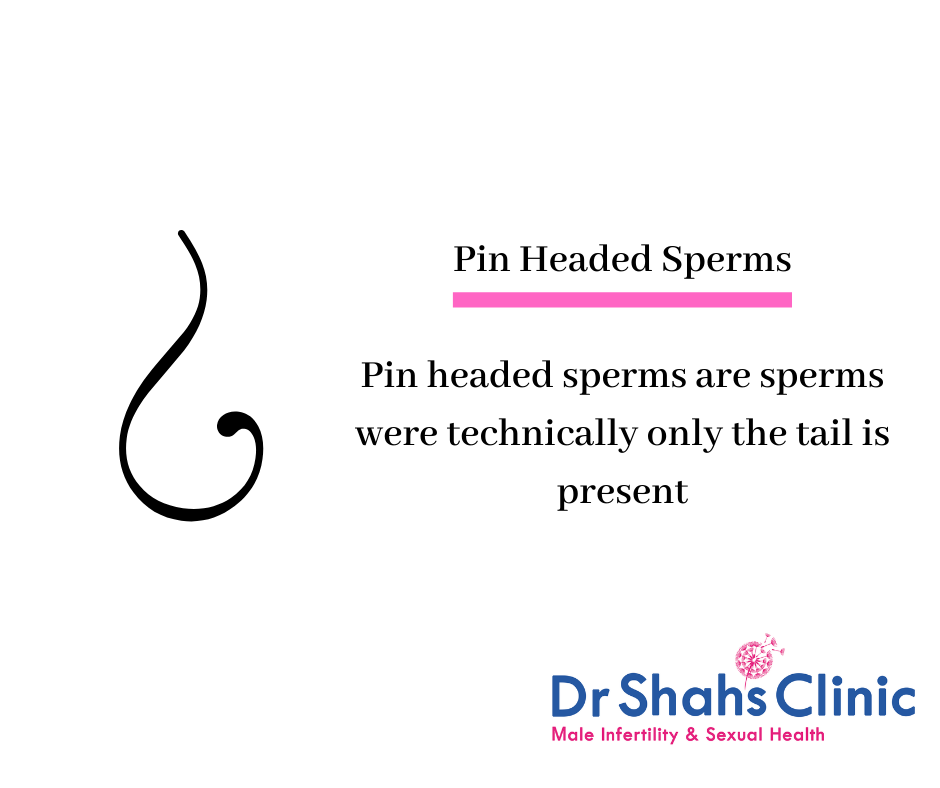Abnormal Sperm morphology – it’s meaning and implications
Vanakkam, Namaste & Welcome. My name is Dr. Shah, I am a practicing andrologist & sexologist.
I currently work at Dr. Shahs Clinic which is a dedicated full stack mens clinic in chennai.
In this post, we are going to quickly discuss on abnormal sperm morphology, its meaning and its implications for fertility treatments.
Now, let’s move on to the good stuff!
As per the WHO 2010 andrology laboratory guideline values, it’s enough if a man produces just about 3% to 4% of normal-appearing sperm. However, you might ask me next ‘Doctor, what is a normal-appearing sperm?’.
The image of a perfect sperm (if there is such a thing) is given below for your reference.
To describe a normal-appearing sperm (as seen under the microscope during a semen test) is as follows
A. A normal sperm head should be oval in shape and smooth with a length of 5 to 6 micrometers and width of 2.5 to 3 micrometers
B. The midpiece (the orange colored thing in the picture above) has a central insertion and 4 to 5 micrometers in size
C. The acrosome (not shown in the image ) is a cap-like structure that covers the head and covers up 40% to 60% of the sperm head
D. The tail should be anywhere between 45 to 50 micrometers in length
However, a very important point to bear in mind is that, although sperm morphology is an important parameter it ALONE is not indicative of a man’s fertility status.
Moreover, sperm morphology scoring varies from
A. Lab to lab
B. And from the operators technical scoring skill
What this means is that I may score a sperm as normal but another individual may not. This is exactly where quality control in sperm testing becomes highly necessary. But more on that later…
What’s the big deal with sperm morphology?
Now, basic science experiments done with IVF came with data that suggested that only the so-called normal-appearing sperms are capable of actually binding to the egg. But, there is a catch…we really do not know much about what happens inside a women’s birthing tube. Does only the 2% or 3% of normal-appearing sperm bind to the egg inside the womb? That’s anybody’s guess.
At present, we are extrapolating data from scientific experiments at best. Thus sperm morphology cannot be strictly relied upon as an absolute marker of a man’s sperm quality. However, in the event a man has zero percent normal forms or sperms with major defects like Globozoospermia (sperms without an acrosome cap) or only pinheads (sperms without heads), sperm morphology testing becomes very useful.
Men whose semen reports show less than 3% of normal-appearing sperms are diagnosed with teratozoospermia. In some individuals, a combination of low sperm count and/or low sperm motility may also be seen.
The images below depicts the various types of sperm defects
Fig A below shows a large-headed sperm (pictorial depiction)
The next Fig B shows a sperm head defect with a small head. Both large heads and small heads are scored under head defects.
The next figure C shows a rarer type of abnormal sperm morphology called double heads.
Normally, in a conventional semen analysis, we count close to 400 spermatozoa for sperm morphology estimation. Sperm morphology scoring is as below
- Normal Forms in percentage
- Head Defects
- Midpiece defects
- Tail Defects
- Multiple defects
The next image Fig D shows a typical midpiece defect.
The next image depicts a typical tail defect. Of course in some instances, some men produce sperms with multiple tails.
Now, let’s move on to a more rarer type of sperm defect called pinheads.
Pinheads are spermatozoa without a head section (that means no DNA or the DNA & midpiece is both missing). In some patients, we see semen samples with a large number of pinheads in the sample. Consequently, in the absence of a head, natural fertilization is not possible and these men often suffer from severe forms of male factor infertility
The image below depicts a typical pinhead sperm morphology defect
Okay,
Now let me answer a few common questions on sperm morphology
What is the sperm morphology normal range?
The sperm morphology normal range for fathering a child in the first year of marriage is anywhere from 3% to 14% (our own clinical data). However, where the morphology is more than 3%, it is often considered sufficient
How can I improve my sperm morphology?
Sperm morphology can be improved by the following simple tips below. There are also numerous male infertility treatment options for teratozoospermia
- Regular exercise
- Healthy Lifestyle habits
- Taking lots of fruits and vegetables
- Medications were necessary
Can you get pregnant with abnormal sperm morphology?
While poorer percentages of sperm morphology are associated with subfertility, even in men with very low sperm morphology natural pregnancies are definitely possible.
Can poor morphology cause miscarriage?
This fact has not been conclusively proven. Moreover, with newer tests to assess sperm DNA fragmentation, sperm morphology scoring is slowly taking a back seat. Furthermore, our own data suggests that sperm morphology seems to have no correlation with the sperm’s actual DNA integrity as such. With more research, morphology scoring seems to be getting less and less important in the assessment of male fertility.
I hope you enjoyed reading this article on sperm morphology. Please do share this with all your friends and loved ones. Keep watching this space for more.
Oh
and stay healthy and stay happy 🙂
Get in touch with us below
Dr. Shah’s Clinic for Male Infertility & Sexual Health
No 21, Ground Floor, Bazullah Road, T. Nagar, Chennai, Tamil Nadu 600017
Ph – +91-9790783856
References

